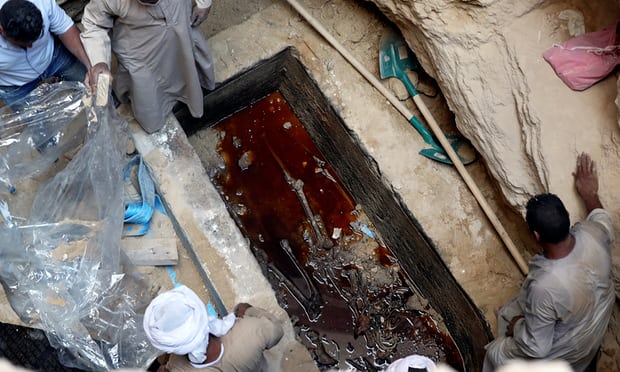A second sphinx between the existing sphinx’s Karnak and Luxor may have been found by construction workers as they renovate a major road in Luxor, says the general director of the Luxor Antiquities, Mohamed Abdel Aziz.

Possible sphinx found in Egypt…Tech Explorist
The citing, if confirmed, will make this Egypt’s second largest sphinx. It contains a human head imposed on a lion’s body. It could’ve been in existence since 2500 BC making it over 4,000 years old.
The artefact is being kept underground to protect it from exposure to extreme changes in temperature – which can affect it. Aziz confirmed to Egypt Today by stating that it is “due to the nature of the environment it is in.”
The construction project has ceased to allow for further investigation.
A sphinx is a mythical creature with the likeness of a human yet with the head of a lion. The largest sphinx is the Great Sphinx of Giza, next to the Great Pyramids of Giza. The oldest known sphinx was found near Gobekli Tepe in Turkey dating back to 9,500 BCE.
Recently, Egyptian archaeologists discovered a black granite sarcophagus which sparked a debate as to whether they should open it or not, with descriptions of imaginary plagues and curses used to dissuade them.
The archaeologists, however, went ahead and opened the coffin.
“The sarcophagus has been opened, but we have not been hit by a curse,” said Mostafa Waziry, the head of Egypt’s Supreme Council for Antiquities.
Inside the coffin were three skulls, one of which had multiple fractures, revealing that it has been hit by a sharp instrument and that it belongs to a warrior. The other two were intact and belonged to men. They were surrounded with sewage water, which had apparently leaked inside.
According to Waziry, the mummies did not belong to a Ptolemaic or Roman royal family as it had been supposed earlier. The coffin did not have any inscriptions or a cartouche bearing their names. He also added that no additional trinkets were found, which further proves the inhabitants were not of royal blood.
Here are the photos of what was discovered:

The Tomb after the lid was removed. Photograph: Mohamed Abd El Ghany/Reuters

Three skeletons and water sewage were found in the sarcophagus (Egyptian Ministry of Antiquities)

Skulls of the three decomposed mummies. Photograph: EPA

Three decomposed mummies were found in the sarcophagus- Egypt Today/Asmaa Ali Badr










